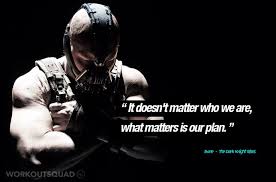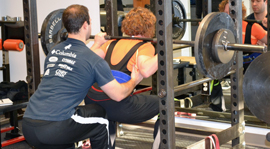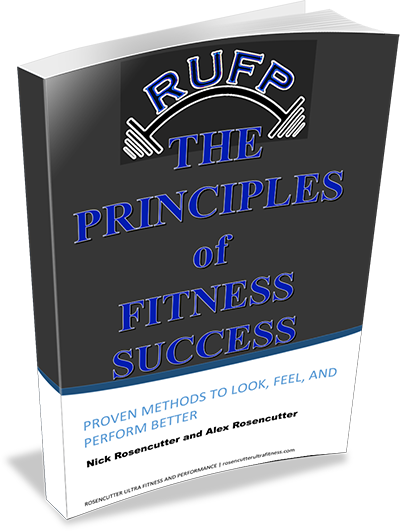Out of all of the things that people talk about with training and movement, breathing mechanics are one of the most important and most overlooked aspects. Breathing runs our body. Knowing this, it should be pretty easy to understand that if breathing mechanics are off, there will be compensatory problems. Faulty breathing mechanics can affect positioning, movement, pain signaling, nervous system state, blood ph levels, oxygen delivery, sleep patterns, anxiety, performance and the list goes on. Bottom line is breathing is kind of a big deal. Yet, while there are some very good fitness, rehab and related health professionals who are doing some great things with it, the vast majority in these related fields don’t even begin to think about looking at it. This is a problem and a mistake and is very unfortunate for their clients.
What is Breathing All About?
In a nutshell, breathing occurs with the purpose of taking in oxygen and expelling carbon dioxide so that we can live and go about our lives. Without it we would die. The diaphragm is our primary muscle of respiration. We then have accessory muscles that help the diaphragm to do its job by moving the ribs in various ways with each breath. These include the scalenes up in the neck, the intercostals between the ribs and the serratus posterior superior and inferior in the upper and lower back respectively, to name a few. The diaphragm essentially blows up like a balloon and moves down as we inhale and moves back up and “deflates” as we exhale while the various accessory muscles assist in moving the ribs with each breath. In an ideal world, our pelvis and ribs are lined up appropriately so that our diaphragm can grab on how it needs to and our ribs expand in the front, sides and back from the abdominal region all the way up into the chest. For many people, this does not occur because of various compensations and poor postural positioning. This leads to many problems as mentioned above.
Common Breathing Faults
1. Rib Flare and Low Back Extension
When we inhale, we want our ribs to expand all around our trunk like a balloon. Many people miss the boat and breathe only into the front as their ribs flare up and their low back extends. Though it may be subtle, when this occurs thousands of times a day, the low back and upper chest, shoulder and neck muscles that overwork when this happens become angry, inflamed and often painful. When done for a long enough period of time, this will usually show up in resting posture.
2. Excessive Rib Elevation
This can often occur along with the flare and extension from fault 1 but sometimes occurs on its own so we’ll talk about it separately. Rather than expanding the chest walls like we want, many people will simply elevate their ribs straight up in a shrugging type motion. The scalenes mentioned earlier along with the upper traps, levator scapulae and sternocleidomastoid muscles often overwork to raise the ribs up all day and get angry because of it, often leading to neck pain and headaches. They begin to act as primary breathing muscles instead of accessory breathing muscles. This is often called “chest breathing” by laypeople.
3. Poor Apical Expansion (especially right side)
As mentioned in the previous fault, many people do not get optimal expansion of their chest walls (apical expansion). This tends to be especially common on the right due to the position of our heart and our liver. With our liver towards the right and our heart towards the left, we tend to hang over our right sides, causing our right shoulders to sit lower than our left. Furthermore, our left hemi diaphragm pushes air to the right chest wall while our right hemi diaphragm pushes air to the left chest wall. Our right hemi diaphragm is apposed by the liver and the heart so it is able to push air easier than the left hemi diaphragm, which doesn’t have much to appose and help push the air. Because of this, our right upper ribs tend to get stuck in a “deflated” state. When we don’t get good apical expansion here, the elevation that was mentioned earlier sets in and the right scalenes, scm, etc. tend to take up the slack. This affects shoulder motion (often a lack of internal rotation) and head/neck mechanics. Its a big deal yet often completely overlooked.
There are also plenty of people who don’t fill either chest wall very well and get all belly motion. Remember, we want rib expansion all over the map, not just the belly. And pay attention to the fact that I said chest EXPANSION, not chest elevation, which is what occurs with the common “chest breathing” fault that is more commonly known. The Postural Restoration Institute has done a lot of great work on these apical expansion patterns.
4. Paradoxical Breathing
This type of breathing is an interesting occurence. This occurs when the belly moves in on the inhale and out on the exhale, the reverse of what should occur. If you’ve ever been to a group exercise or dance class with a “coach” or “instructor” who told you to “suck and tuck,” then this could be you (different thing but often related). This method of breathing will significantly decrease the deep and superficial stability all around your trunk and hips and can lead to a multitude of problems.
When we look at our “core” or our trunk and hips, we have deep stabilizers and superficial stabilizers. The superficial stabilizers are the ones that most people are usually talking about when they say “core.” You know, the abZ. Your rectus abdominis aka the 6 pack muscle and your external and internal obliques. If you’re lucky, low back muscles such as the erectors might even be mentioned in the convo. These guys are great and have their purpose; however, the deep stabilizers or the deep “core” need to be working properly first and need to be working harmoniously under the superficial players. The thoracic diaphragm, the pelvic floor muscles and the transversus abdominis are some major ones that need to be functioning properly.
The diaphragm attaches to the ribs, the spine and the central tendon and plays a role in both stabilization of the spine and ribs as well as a role in respiration. Ideally, we want our abdominals to brace and stabilize appropriately so that our diaphragm can focus more on respiration. We also want our diaphragm and our pelvic floor muscles to move and work together harmoniously for optimal stability, control and function. The folks at the Postural Restoration Institute go as far as calling the pelvic floor the pelvic diaphragm and the diaphragm the thoracic diaphragm, since they are so interrelated. When someone moves their belly in on the inhale and out on the exhale, this harmony is not there and stability suffers.
Looking aside at the relationship between the diaphragm and abdominals, with the “suck and tuck” method, more properly known as “hollowing,” (pulling your belly button towards your spine/sucking in your stomach) you effectively turn off the abdominal brace, making yourself unstable. Hollowing was proposed to activate the transverse abominis in isolation (which makes no sense with any exertional activity). Because of this hindering of the brace, the diaphragm then needs to turn some of its focus off of breathing and act more as a stabilizer. Guess what this leads to? Poor stability, poor respiration and oxygen delivery, poor movement, injuries and pain and the list goes on. Stuart McGill has done a lot of research comparing hollowing and abdominal bracing and makes a great point in his book “Ultimate Back Fitness & Performance:”
“Hollowing is an attempt to simply activate transverse abdominis in isolation, while bracing is simply contracting all muscles in the abdominal wall without drawing in or pushing out.” (P.120)
“Bracing appears to be a highly efficient strategy to enhance stability.” (P. 121)
“Finally, hollowing is weakening of the abdominal muscles as it can only be done when the abdominal muscles are almost inactive.” (P. 121)
That last point should resignate with you greatly if nothing else does. Don’t believe it? Try this. Lay on your back and bring your knees to your chest. Try hollowing/sucking in your stomach and straighten your legs while lowering them to the floor. Now that you feel how weak that is, brace your abs (harden them against your finger like you are about to get punched) and do the same thing. It is not even a question of which way is stronger. Try to lift anything heavy or exert yourself at all and this should happen almost automatically. The reason I’ve gone slightly off path of straight breathing is the fact that this abdominal function works so closely with breathing and the diaphragm, as mentioned above. Is there a time and a place for hollowing? With a specific rehab protocol for a specific reason, there absolutely may be. For performance, in my experience and opinion, I do not see it but if someone has a specific reason for it, then power to them.
When the paradoxical style of breathing and the suck n tuck style of poor abdominal function becomes habit, excess tension is often stored throughout the body since the diaphragm never really fully relaxes between the shallow breaths that occur since it is overactive as a stabilizer. If you feel like you constantly need to hold your breath when you are engaging in physical activity (or maybe even at rest) then this is probably describing you. This then leads to our sympathetic nervous system becoming overactive and we get stuck in fight or flight mode. This can then lead to faulty ph levels, inflammation, pain, anxiety, poor sleep, poor recovery and the list goes on. This problem can occur with the other breathing faults mentioned above as well, and these faults are often combined. This paradoxical pattern just seems to be closely related with this stability vs respiration problem. So next time you have an instructor or coach who instructs you to suck and tuck and/or breathe in this manner, I strongly encourage you to ask WHY?
5. Overbreathing
All of these situations tend to lead to a hyperventilatory state of overbreathing, where more carbon dioxide is let out than normal. Think “panic state.” According to Leon Chaitow and Judith Delany in their book “Clinical Application of Neuromuscular Techniques,”
“People who overbreathe, or who have marked breathing pattern disorders automatically exhale more CO2 than is appropriate for their current metabolic needs. Exhaled CO2 derives from carbonic acid in the bloodstream, and an excessive reduction of this leads to a situation known as respiratory alkalosis, where the pH of the blood becomes more alkaline than its normal of ~7.4.” (P.31-32) They go on to talk about the fact that the increased alkalinity causes more oxygen to stay binded to hemoglobin, which then leads to reductions in calcium and phosphate levels as well as intracellular magnesium, which all leads to many undesirable things such as increased sympathetic arousal, increased sense of apprehension and anxiety, reduced pain thresholds, fatigue, trigger points, compromised core stability and loss of balance among others. “Loss of CO2 ions from neurons stimulates neuronal activity, causing increased sensory and motor discharges, muscular tension and spasm, speeding of spinal reflexes, heightened perception and other sensory disturbances. Muscles affected in this way inevitably become prone to fatigue, altered function, cramp and trigger point evolution.” (P. 32)
Bottom line and moral of the story is: Breathing affects A LOT of things. If you are not addressing it, you are missing out and probably allowing many annoying problems to continue being problems without realizing it.
Ok, so what SHOULD we do?
Generally speaking, when we practice breathing, when we inhale it should be through our nose and when we exhale it should be through our mouth. This encourages proper mechanics and movement. Inhaling through the mouth encourages excessive accessory muscle usage and is usually related to faulty breathing mechanics. When we inhale, we should get good expansion around the front, sides and back from our abdominal cavity all the way up into the chest. When we exhale, our ribs should move down and we should blow all of the air out through our mouths like we are blowing up a balloon.(Use a balloon to train it with if you really wanna get good) This allows us to get all of the tension out of our system and lets our diaphragm fully lengthen and relax so that it can then recoil and shorten/contract more effectively to give us a deeper and better inhalation. It can also help calm down excessive low back tone and get us out of the oh so common extended state. It can calm down our sympathetic nervous system, calm down pain, help us sleep and so many other things. Learn to EXHALE. Once you do this, you will be able to inhale better which will then lead to better movement, better recovery, better stability, better tissue quality, better sleep and the list goes on.
Taking things a step farther, with general physical activity we should be able to breathe effectively with our diaphragm while our abdominals do their job stabilizing. There are plenty of effective ways to train this.
If we are talking about something such as a power lift like a squat or deadlift, then we want to get full inhalation, keep the air in and use this to help increase the stability around the abdominal wall until we exhale to finish the concentric portion of the lift. (So yes, the diaphragm SHOULD use its stabilizing capabilities in some instances).
There are many exercises and drills that can be used to effectively train breathing. Check out our youtube page or come visit us to learn more. You can also find many great ones from the Postural Restoration Institute. Below is a great one to get you started.
The moral of the story is breathing is a big deal. It affects everything with your body. If you are not addressing it with your training, you are missing out big time.










